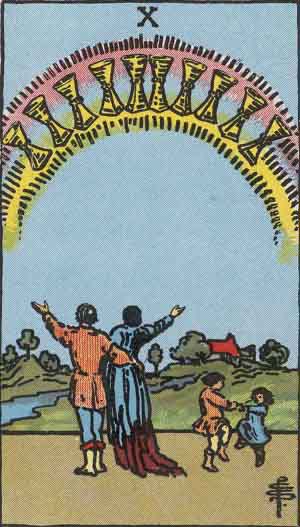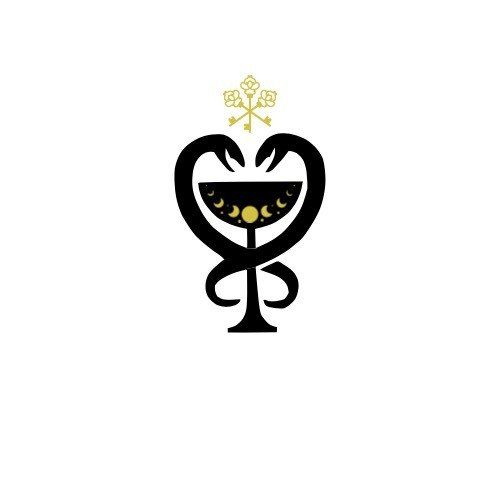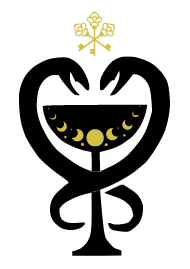A Tale of Ten Cups
There is a joyful and loving message outstretching itself above you. The Ten of Cups is here to talk about family values and the value of family. But what makes a family? Representing the planet Mars in the sign of Pisces, we're going to touch on what it means to fight for our right to rewrite our own family values.

The Ten of Cups is the tarot card most associated with the happy family. In the Waite-Smith depiction, we see two adults embracing with one arm outstretched in celebration. A pair of small children in similar dress dance in a circle with locked hands. The landscape is fertile and green with a small river and a cozy cottage in the distance. To me, the most striking element of this card is a rainbow that stretches over the scene. The Ten of Cups corresponds with Mars in Pisces. Because it is a 10, it is ruled by the Wheel of Fortune (number 10, major arcana.) For our purposes we can consider these correspondences as the otherworldly connections (Pisces) that we are willing to fight for (Mars) in the realm of the Wheel of Fortune (Jupiter.) The Wheel of Fortune corresponds with Jupiter, the planet most associated with expansion and gifts from the universe. It is as if Jupiter itself has gifted this happy family with an omen of sacred protection: a rainbow of ten cups.
Rainbows have been a part of global symbolism and mythologies for all of human existence. In Greek mythology, rainbows are associated with the goddess Iris. Iris is a messenger goddess who travels via rainbow to deliver messages from the gods on Mount Olympus. In Norse mythology, the realm of man and the realm of Asgard (the realm of the gods) are connected by a burning rainbow called Bifrost. In the book of Genesis in Christian mythologies, the rainbow is a promise directly from God that there would never be another earth-swallowing flood. The rainbow is also synonymous with the dragon in Chinese mythologies. Dragons and rainbows both exist in the realms of sky, making them inhabitants of the space that connects us to the heavens. Hong (or sometimes Jian) is a two headed dragon whose name literally translates to “rainbow.”
From religious mythologies to folk legends and lore, the rainbow is virtually always a good omen. We associate it with peace, the calm after a storm, childlike enchantment, and renewal of hope. In a more modern context, the rainbow has been elected the official (general) symbol of the LGBTQ community. The rainbow flag was first presented by artist Gilbert Baker in San Francisco’s Gay Freedom Day Parade on June 25th, 1978. It has since become a sigil of sorts used as a universal sign of alignment with the queer community. For many queer identifying folks, myself included, this symbol had adopted a bit of a loaded undertone. Sigils and symbols matter. If they didn’t matter, corporate marketing teams wouldn’t budget hundreds of thousands of dollars acquiring and circulating custom branding and logos. As the general public’s demand for inclusivity and intersectionality increases, so does the interest in commodifying our movements.
Here in the US, Pride Month is celebrated for the entirety of June each year. Pride Month annually honors the Stonewall Uprising of 1969 with four weeks of public LGBTQ community celebrations, proclaimed official by government standards in 1999. The Stonewall Uprising began on June 28, 1969 when police raided the Stonewall Inn of Greenwich Village in New York City. Completely fed up with constant police brutality and social repression, the patrons of Stonewall began to push back against the police aggression in response to violent arrests. The uprising would continue on for six days between the police and the human rights activists. This group action would go on to spearhead gay rights movements around the world. Reflecting on the willingness of our queer ancestors to fight for their rights to community access sits so tenderly in my heart when thinking about the 10 of Cups.
Much like the symbol of the rainbow, the concept of “happy family” can also be loaded for many of us. While it is certainly true that not all queer folks experience rejection or scarcity in their immediate family systems, that still isn’t the case for the majority. We are still swimming in extremely young territories of publicly embraced liberation. Our increased access to history, community, media, culture, and public interest provide us with opportunities for affirmation beyond our ancestors’ wildest dreams. Still, we remain in a period of transition as we work to establish a permanent seat at the social political table. The equal rights of countless folks remain suspended in the balance of a decaying system. Countless others outside of the reaches of provisional privilege spend their lives closeted, lest they face legal charges or worse.
Now, let me be clear is stating that being a queer person is one of the greatest joys in my life. I have had an internal sense of my queerness and gravitated toward queer spaces for as long as I can remember. I have never experienced complete houselessness, I have access to medical care, and I have been employed in some form or another since I was a teen. I’m a femme presenting person who benefits directly from assumed-CisHet privilege within my union to my phenomenal husband and ally. I have the option to shed my queer identity in moments of danger, and I have the option to give myself over to a life of quiet, convenient convention. However, I believe that subverting my identity as a queer and magically-oriented person dishonors the lineage of ancestors who risked it all to shine a light on what freedom should look like, and how much it still eludes us to this day. It is an honor to live in a time of queer liberation. It is an honor to fight through the Marsian Valley in defense of our communities. It is an honor to create queer spaces, an honor to inhabit them, and an honor to keep them alive and well.
This is why I feel it is essential to reflect on symbols and what makes them sacred. Is it wide-spread novelties and advertising campaigns? Or is it the embodied feeling of safety and promise that we find in queer space. We live under capitalism and that is a current fact of life. Consumerism fuels our economy and nothing, including social justice movements, is pardoned in its wake. However, just like rainbows themselves, the ecstatic presence of community affirmation cannot be captured. When we break from conventional objectivity, we create space for the subjective. When we honor the subjective experience, we create space for deeper understanding. The felt-sense of authenticity and intimacy that is possible is our rainbow. Our willingness to redefine the concept of a happy family for ourselves is our ten cups.
I believe that authors of the stunningly gorgeous
Missing Witches: Recovering True Histories of Feminist Magic put it best in the following passage:
“When we say binary we mean things that are opposites or set up in opposition to one another. Either This or That. Day, Night. Black, White. Good, Bad. In the language of computers’ binary code there are only ones and zeros. 1 or 0. Nothing else. But to view the world in only sets of ones and zeroes, thises and thats is, as we’ve seen over and over again, easy, uncomplicated, and deeply Dangerous. It sets us up as Oppositional. Day and Night are opposites, sure, but we can all agree that some of the most magical times are held in those blurred spectral moments between the two? The dusk, the dawn, and the in-between times. The binary we are almost always talking about when we use this term “Nonbinary” is Man/Woman. Some people feel trapped by society’s expectation that we fit into one and only one of two, only two, options: male OR female. The binary says Red or Blue only, but I don’t want to live in a world without Purple. Purple is my favorite color.” Dickens, Risa, and Torok, Amy.
Missing Witches: Recovering True Histories of Feminist Magic. North Atlantic Books, 2021.
Rainbows are arcs. They connect two visual points like a bridge, always making space for Red, Orange, Yellow, Green, Blue, Indigo, and Violet. They symbolize our direct connection to sources that cannot be stolen and sold back to us by religious dogma or doctrine. It makes perfect sense to me that the rainbow would also become the elected generalized symbol of LGBTQ alignment, because a felt-sense of identity is just that. Authenticity in our self-identity is the bridge that tethers us directly to source. This does not mean that you do not have access to source if you are unable to publicly live your authentic truth safely, in fact it is quite the opposite. That tiny voice of massive knowing inside is like Spirit’s invisible hand on your shoulder with the promise of greener pastures. Your happy family is out there, and if you can’t find them, put a hand over your heart. Follow the rainbows.
So when the Ten of Cups presents itself to you, reflect on your feelings around connection and family. Does it elicit joy or do you bristle at the concept? What does it feel like inside of your body? What does the ideal image of a happy family look like in your inner world? How do you define your internalized family values, and do they serve your highest good? If the Ten of Cups presents itself to you in reverse, consider where your internal family systems could benefit from the cool balm of authentic loving connection (queer or otherwise) My wish for you is a rainbow that tethers you to the voice of your truest self, devoid of shame, alive with love, and illuminated in every color.
Cheers,
Sarah

